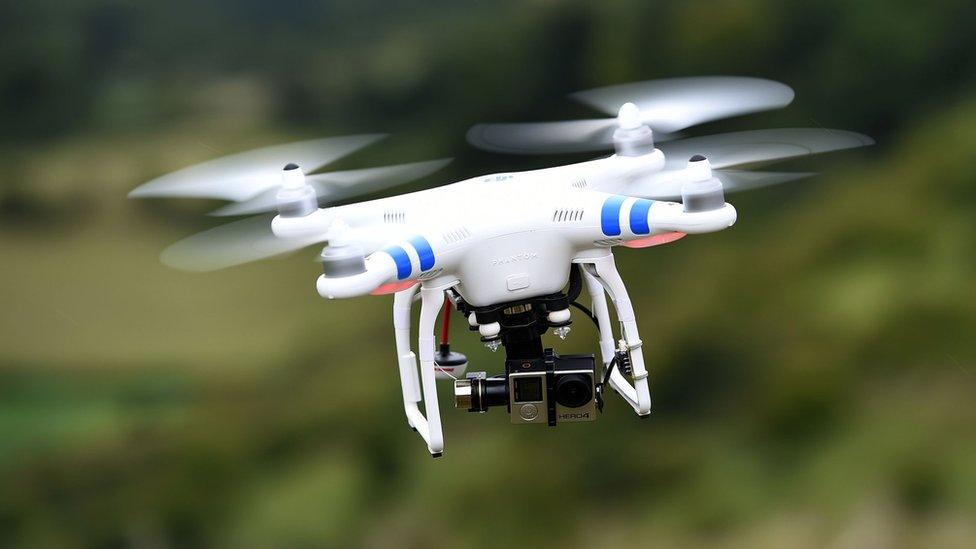Singapore Airshow: Computing the costs of connectivity
- Published
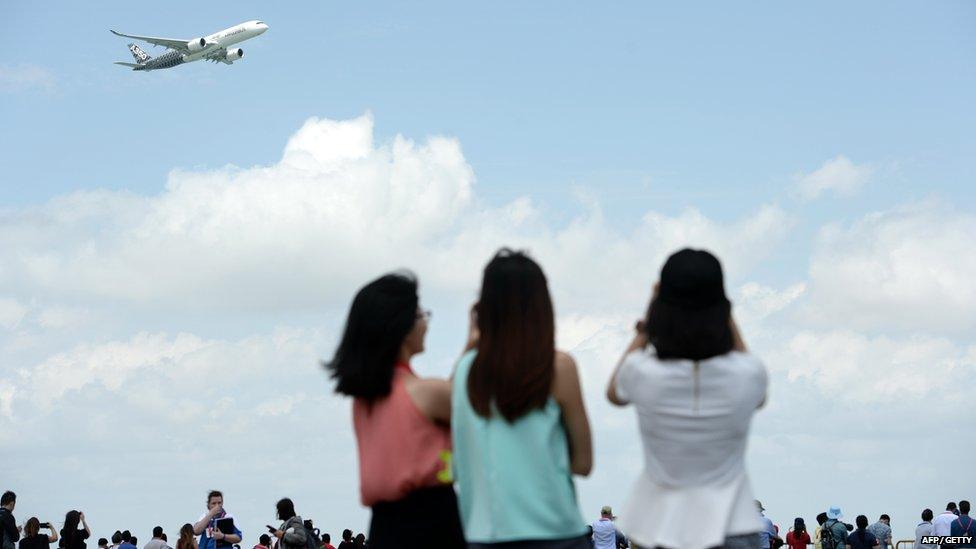
Would you be comfortable flying in a pilotless passenger plane? It is a question to which most people, myself included, would immediately answer "no".
However, many industry experts say that this prospect may one day become a reality, especially given the increased use and commercial applications of unmanned aerial vehicles (UAVs) or drones.
But as connectivity on our planes become more sophisticated, the proliferation of data brings its own challenges.
Some industry insiders say that the idea that a plane could be hacked is no longer far-fetched.
Aviation automation
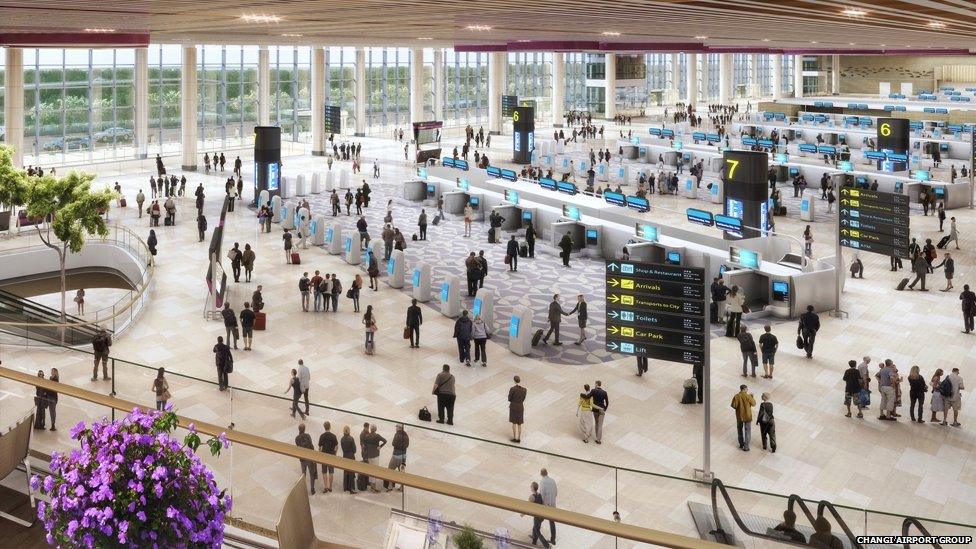
Changi Airport Terminal 4 opens for business next year
Next year, when Singapore's Changi Airport Terminal 4 opens, it will herald Asia's first full self-service pre-flight check-in, using biometric and facial recognition technology.
As well as checking in for your flight via your phone or smart device, you will be able to print your own boarding pass, tag and drop your own luggage, and clear immigration, all without dealing with another human being until you get on the aircraft.
It is part of a broader trend within the aviation industry towards increased efficiency and cost savings using more automation.
But that's not all. Once on the plane, you can also look forward to no longer being told to switch off your mobile phone or laptop before take off and landing.
For years, we've been told that these devices could somehow interfere with the aircraft's systems.
But, David Bruner, vice president of global communication services at Panasonic Avionics, says that extensive testing by the industry's biggest companies has proved that is not true.
"You've seen most of the civil aviation regulators modify their polices - airlines then follow a little behind that," he says.
"Safety is the number one concern... the regulators know that it is safe to operate these devices in all stages of flight but they like to take things carefully."
New airliners such as the Airbus A350 XWB now use a fourth generation in-flight entertainment system with widescreen high definition TV and "full connectivity" to the outside world via personal electronic devices.
Its marketing videos, external proudly show off a mobile phone and laptop symbol next to the "fasten your seat belt" sign.
Next generation
While we live in a connected world, until recently there was one place where we couldn't stay continuously plugged into our mobiles or laptops - 30,000ft in the air.
Previously, only business jets had onboard wifi, because only their multi-millionaire and corporate owners could afford the cost.
But technological advances mean this is changing. Equipment such as routers and antennas have become smaller and cheaper and the savings can be passed on to the rest of us.
Wifi in the skies at the Singapore Airshow
Engineering firm Honeywell is working with satellite company Inmarsat to develop the next generation of onboard wifi.
It will allow passengers to stay connected at speeds similar to those you get at home or in a cafe, without being exorbitantly expensive or plagued by patchy connections.
Brian Davis, Honeywell's Asia vice president of air transport and regional aerospace, says that soon passengers will be able to stay connected to their Whatsapp group chats, send emails and even watch live television events such as the this year's Olympics.
"If you can imagine flying across the ocean, not dropping the signal, having the ability to actually stream video - it's a completely different customer experience," he says.
However, it also means even larger amounts of data - all of which will need to be encrypted and protected.
Software giant SAP works with 9 of out ten airlines across the Asia Pacific region.
It says a plane currently produces about 20 terabytes of data an hour and that the aviation business can take better advantage of the information provided.
"A lot of airlines are using parts of the data," says SAP's Derek Maggs.
"But are they using it for predictive maintenance, improving flight performance or fuel consumption? (In) most cases the answer is no, they're not using the data effectively."
Cybersecurity risks
After the mysterious disappearance of Malaysia Airlines flight 370, conspiracy theories abounded.
One of them was that the Boeing 777 aircraft had been remotely hijacked and taken over. This claim was even repeated by Malaysia's former prime minister Mahathir Mohamad in a blog post, external.
American security researcher Chris Roberts added fuel to the fire when he made headlines last year for allegedly hacking into an aeroplane's computer system from his seat and became the subject of an FBI investigation.
Industry experts and aircraft manufacturers, however, have dismissed this.
"You hear a few of these stories where people say they've done it. I think there are some people who have good imaginations out there," Mr Bruner says.
"We don't believe that's possible today. But as we get more sophisticated there could be problems, and so we have to take extra special measures to protect ourselves and our industry to make sure this never happens."
Nevertheless, will the aircraft of the future be more at risk of being accessed remotely from the outside?
Leisha Chi reports on aircraft cyber-security
They have a lot more wiring and computer systems installed - such as the flight controls and avionics - as well as the in-flight entertainment systems.
As a sign of how complex aircraft have become today, just compare the number of their spare parts; an older Boeing 737 has 40,000 while an Airbus A380 has four million.
Mr Bruner stresses he doesn't believe there is a risk.
"We've been working for several years on a 'super firewall' to separate out the flight controls - to make sure there is no unwanted access from someone on the ground into one of those flight control systems.
"Today in the terrestrial networks there are unwanted attacks everyday and these are very sophisticated.
"Networks like ours have to take very special measures to make sure you do not have a problem... And you will be attacked, where people are looking to enter your network from outside for malicious behaviour and you don't want that on an airplane."

There are hundreds of commercial airlines globally, but not all of them have in-flight connectivity, or access to the internet
Growing market
Aviation is a fast-growing market, particularly in the Asia-Pacific region, and while it promises billions of dollars in opportunities, challenges abound.
Rising consumer wealth, particularly in the emerging markets of China, India and Indonesia, is expected to drive strong demand for more air travel.
With more and more people are flying, there is heightened pressure to maintain and improve customer and safety standards.
Yet given aviation's digital transformation, it looks like the industry's biggest challenge may be how to remain a step ahead in an increasingly wired world.
- Published18 February 2016
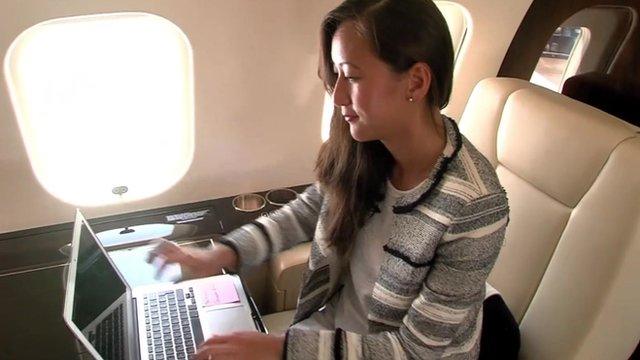
- Published16 February 2016
- Published16 February 2016
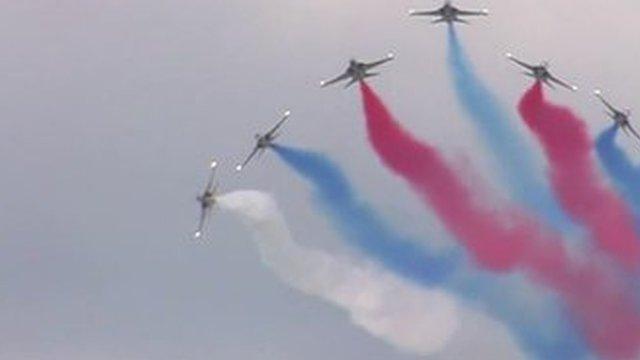
- Published15 February 2016
